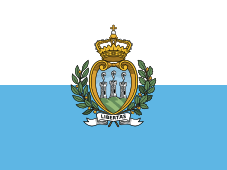Froges
| Froges | ||
|---|---|---|
| ||
 Froges | ||
|
Location within Auvergne-Rhône-Alpes region  Froges | ||
| Coordinates: 45°16′27″N 5°55′33″E / 45.2742°N 5.9258°ECoordinates: 45°16′27″N 5°55′33″E / 45.2742°N 5.9258°E | ||
| Country | France | |
| Region | Auvergne-Rhône-Alpes | |
| Department | Isère | |
| Arrondissement | Grenoble | |
| Canton | Goncelin | |
| Intercommunality | Moyen Grésivaudan | |
| Government | ||
| • Mayor (2014–2020) | Claude Malia | |
| Area1 | 6.43 km2 (2.48 sq mi) | |
| Population (2011)2 | 3,423 | |
| • Density | 530/km2 (1,400/sq mi) | |
| Time zone | CET (UTC+1) | |
| • Summer (DST) | CEST (UTC+2) | |
| INSEE/Postal code | 38175 / 38190 | |
| Elevation |
219–965 m (719–3,166 ft) (avg. 234 m or 768 ft) | |
|
1 French Land Register data, which excludes lakes, ponds, glaciers > 1 km² (0.386 sq mi or 247 acres) and river estuaries. 2 Population without double counting: residents of multiple communes (e.g., students and military personnel) only counted once. | ||
Froges is a commune in the Isère department in southeastern France.
Population
| Historical population | ||
|---|---|---|
| Year | Pop. | ±% |
| 1793 | 477 | — |
| 1806 | 532 | +11.5% |
| 1821 | 517 | −2.8% |
| 1831 | 581 | +12.4% |
| 1841 | 527 | −9.3% |
| 1851 | 537 | +1.9% |
| 1861 | 503 | −6.3% |
| 1872 | 503 | +0.0% |
| 1881 | 553 | +9.9% |
| 1891 | 569 | +2.9% |
| 1901 | 506 | −11.1% |
| 1911 | 526 | +4.0% |
| 1921 | 907 | +72.4% |
| 1931 | 2,376 | +162.0% |
| 1946 | 1,481 | −37.7% |
| 1954 | 1,721 | +16.2% |
| 1962 | 2,279 | +32.4% |
| 1968 | 2,631 | +15.4% |
| 1975 | 2,303 | −12.5% |
| 1982 | 2,191 | −4.9% |
| 1990 | 2,330 | +6.3% |
| 1999 | 3,092 | +32.7% |
| 2009 | 3,458 | +11.8% |
| 2011 | 3,423 | −1.0% |
Twin towns
Froges is twinned with:
-
 Acquaviva, San Marino, since 1984
Acquaviva, San Marino, since 1984
See also
References
| Wikimedia Commons has media related to Froges. |
This article is issued from Wikipedia - version of the 10/28/2016. The text is available under the Creative Commons Attribution/Share Alike but additional terms may apply for the media files.
